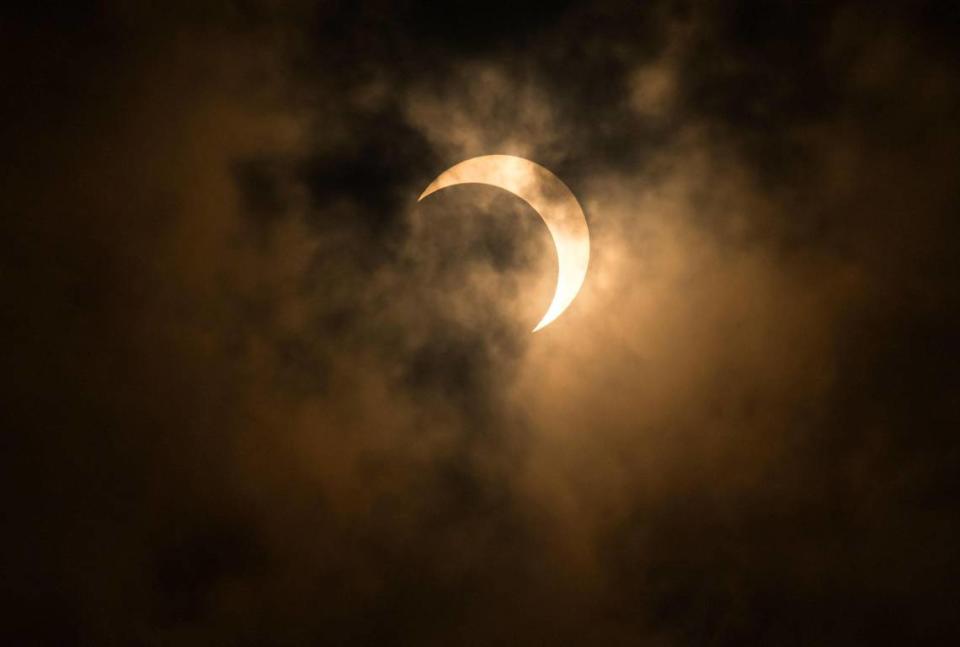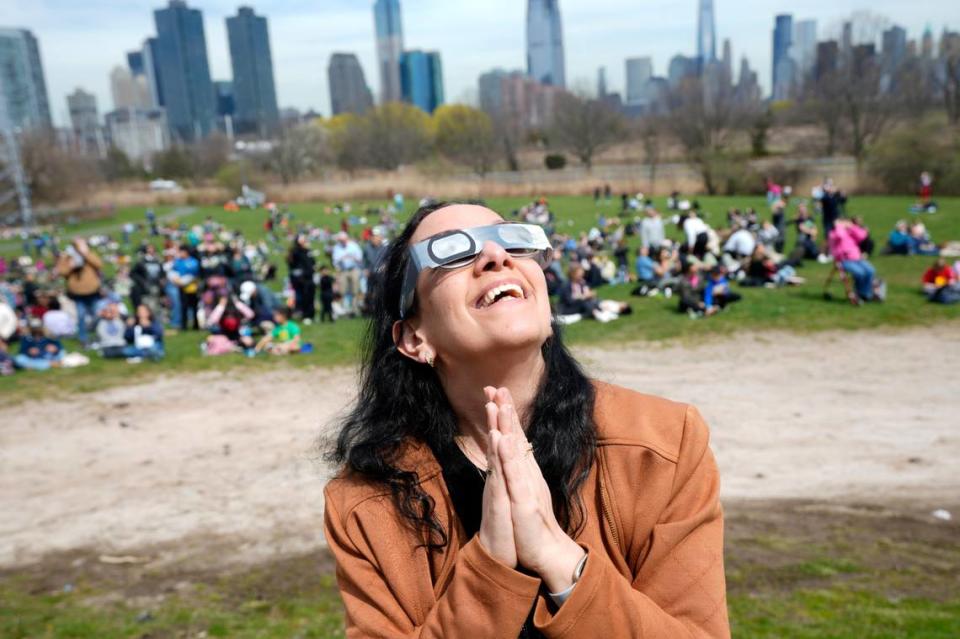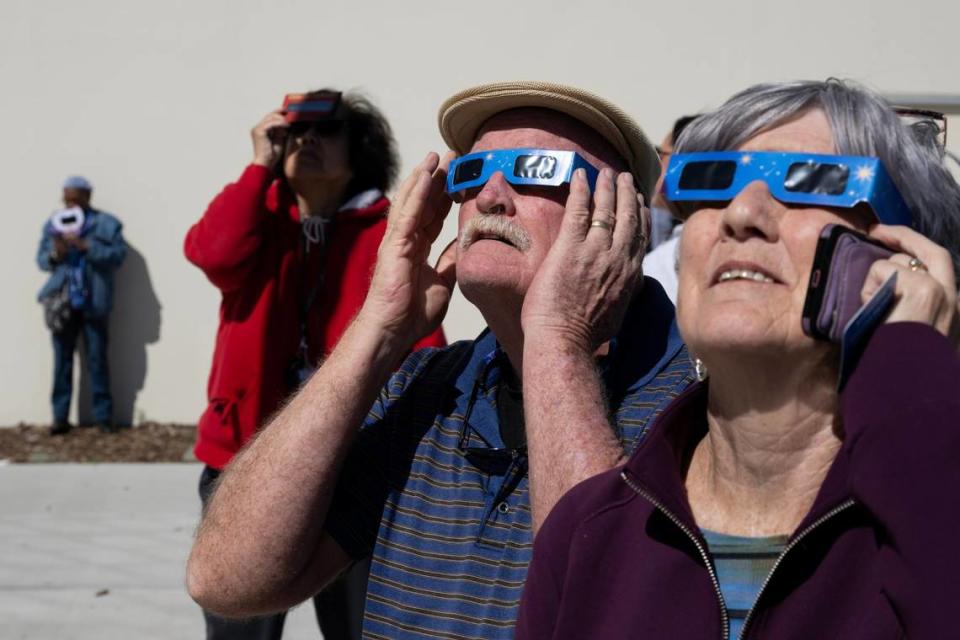When is the next solar eclipse? Will it be visible in California? What you need to know
If you missed Monday’s solar eclipse, you’ll have to wait a while to see a similar celestial event in California.
Crowds of people headed outside Monday morning to watch the Great North American Eclipse
The moon fully blocked the sun as it passed over a significant swatch of Mexico, the United States and Canada.
While folks in some states saw a total eclipse, Sacramento and other California cities only caught a partial glimpse.
“It will be the last total solar eclipse visible from the contiguous United States until 2044,” NASA said.

How often do solar eclipses happen?
Each year, there are two to five solar eclipses across the world, according to TimeandDate.com.
The online time and astronomy source said there are three different types of solar eclipses: total, partial and annular.
According to NASA, a total solar eclipse occurs when the moon passes in between the sun and Earth, blocking the face of the sun.
A partial eclipse occurs when the moon only covers a percentage of the sun.
An annular solar eclipse is when the moon orbits between the sun and Earth, but is at its farthest point from Earth.
“As a result, the Moon appears as a dark disk on top of a larger, bright disk, creating what looks like a ring around the Moon,” NASA said on its website.
Total solar eclipses are less frequent.
According to TimeandDate.com, it takes about 375 years for a total solar eclipse to occur again at the same location.

When is the next solar eclipse?
According to NASA, an annular solar eclipse will be visible in parts of South America on Oct. 2.
On the same date, a partial eclipse will appear in the skies above areas of Antarctica, the Pacific Ocean, the Atlantic Ocean and North America, the agency said.
There will be a partial solar eclipse in Europe, Asia, Africa, North America, South America, the Atlantic Ocean and Arctic Ocean on March 29, 2025.
A separate partial eclipse on Sept. 21, 2025, will affect Australia, Antarctica and the Pacific and Atlantic oceans.
Another annular eclipse will be visible in Antarctica on Feb. 17, 2026, but it will only appear as a partial eclipse in other parts of the world.
The next total solar eclipse will be on Aug. 12, 2026. It’ll only be visible in Greenland, Iceland, Spain, Russia and a small area of Portugal.
According to a list on TimeandDate.com, none of those eclipses will be visible from California.

When will the next eclipse be visible from California?
California will see partial solar eclipses on Jan. 26, 2028, Jan. 14, 2029, and Nov. 14, 2031, according to TimeandDate.com.
The next total solar eclipse to arrive in the United States will be visible to Montana, North Dakota and South Dakota on Aug. 22, 2044.
However, a partial eclipse will appear in other states for this event, including California.

When will California see a total solar eclipse?
Californians will have to wait about 20 years to catch a total solar eclipse.
The Golden State will finally be in the path of a total solar eclipse on Aug. 12, 2045, according to Space.com.
Also known as the Great American Total Solar Eclipse, the 2045 eclipse will cross the U.S., casting a shadow from Northern California to Florida, the website said.
What do you want to know about life in Sacramento? Ask our service journalism team your top-of-mind questions in the module below or email servicejournalists@sacbee.com.

